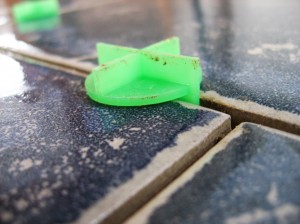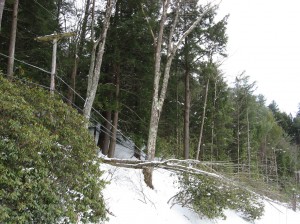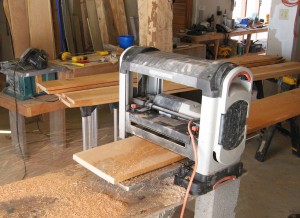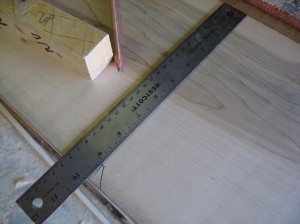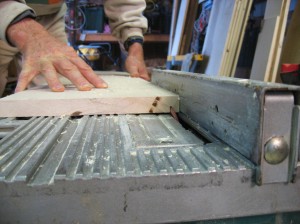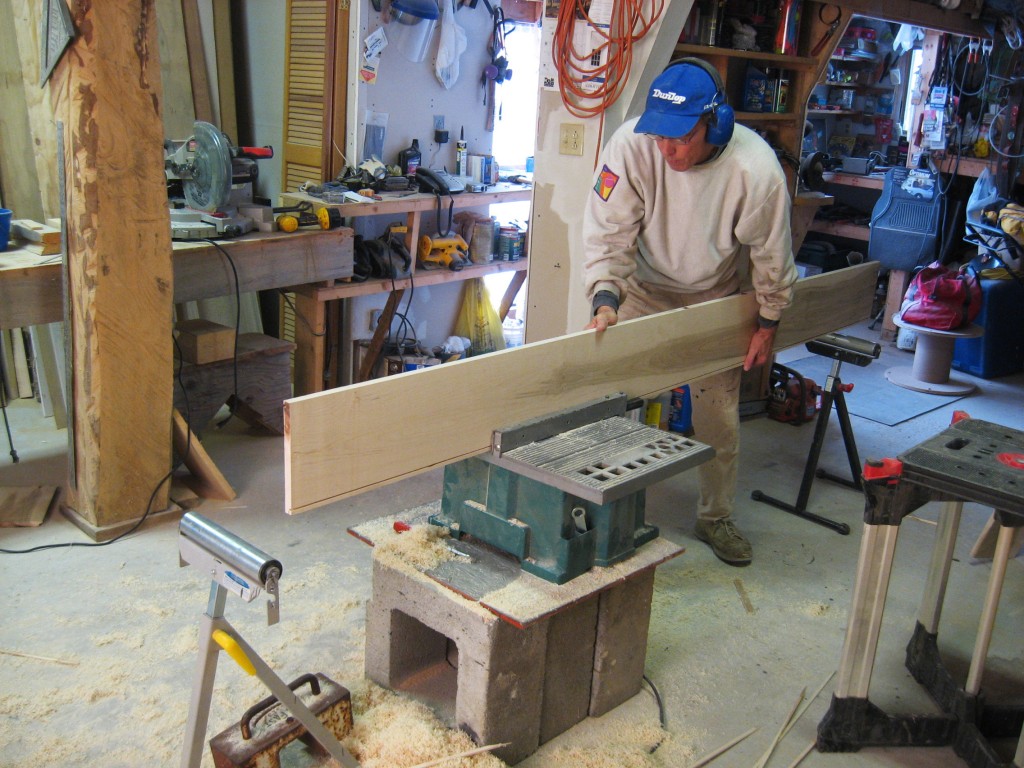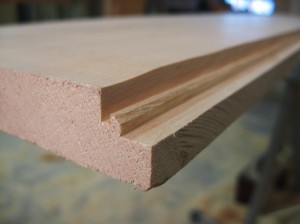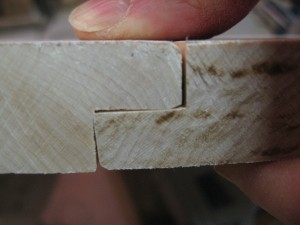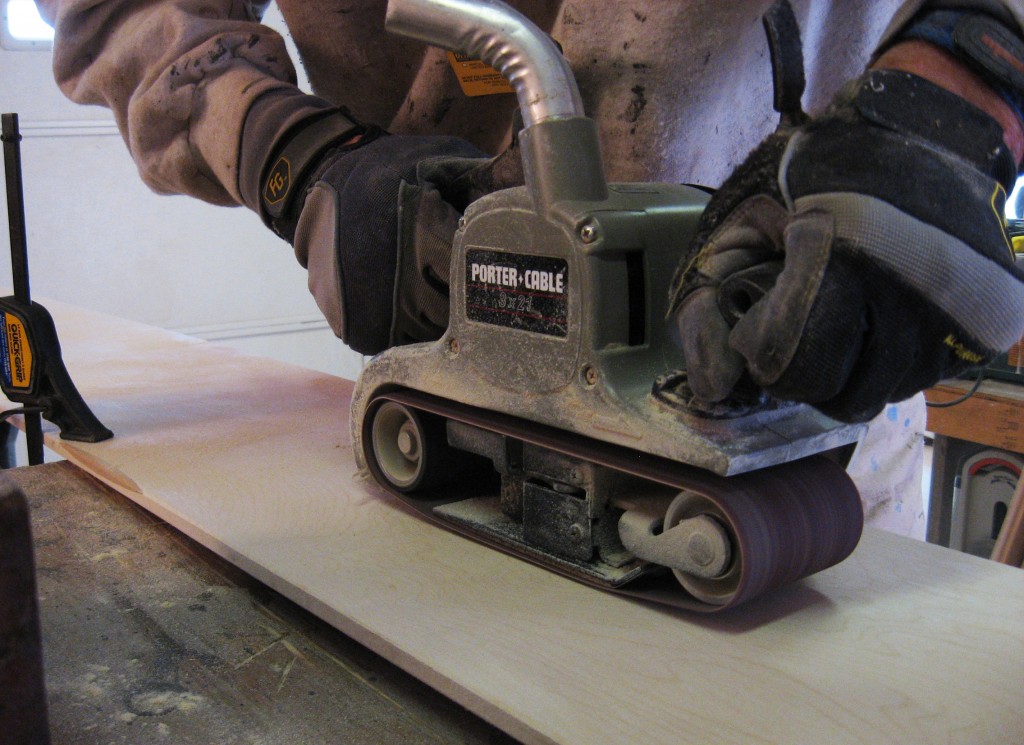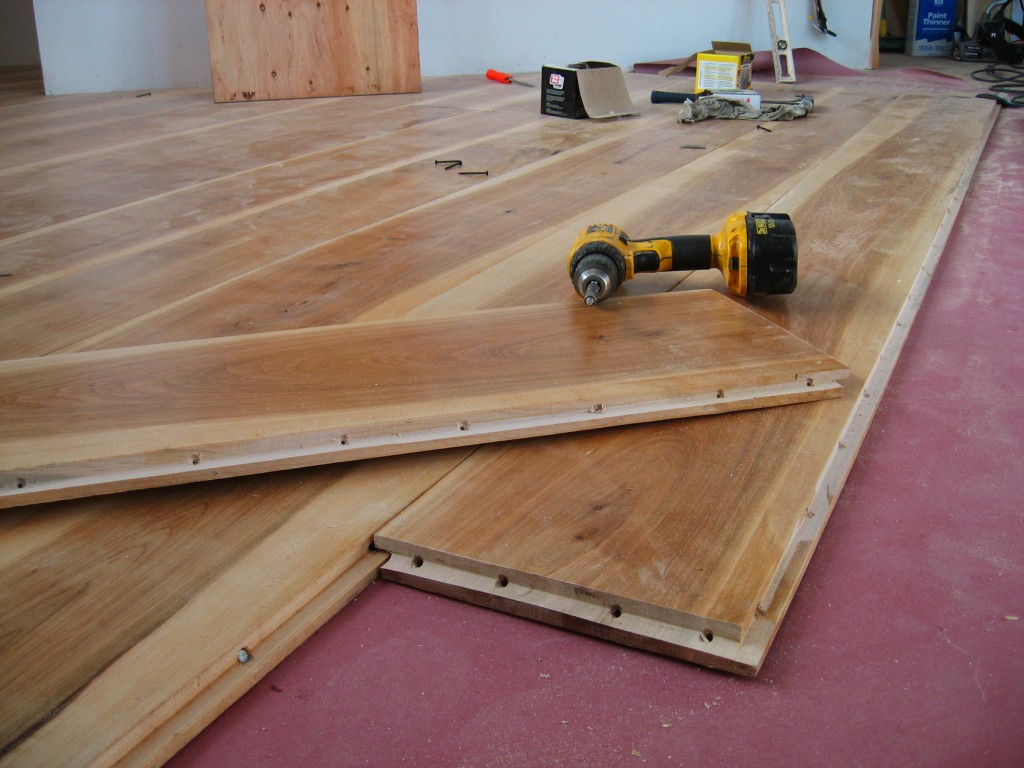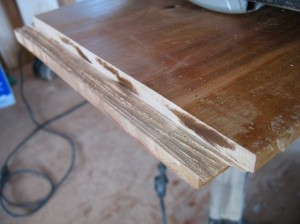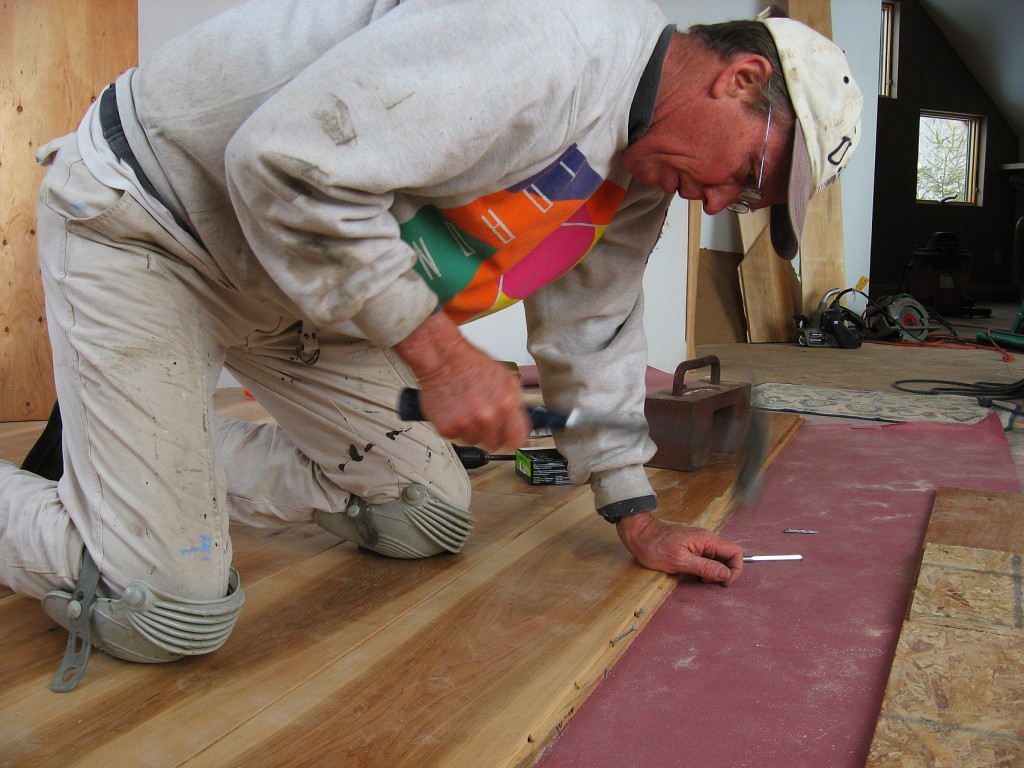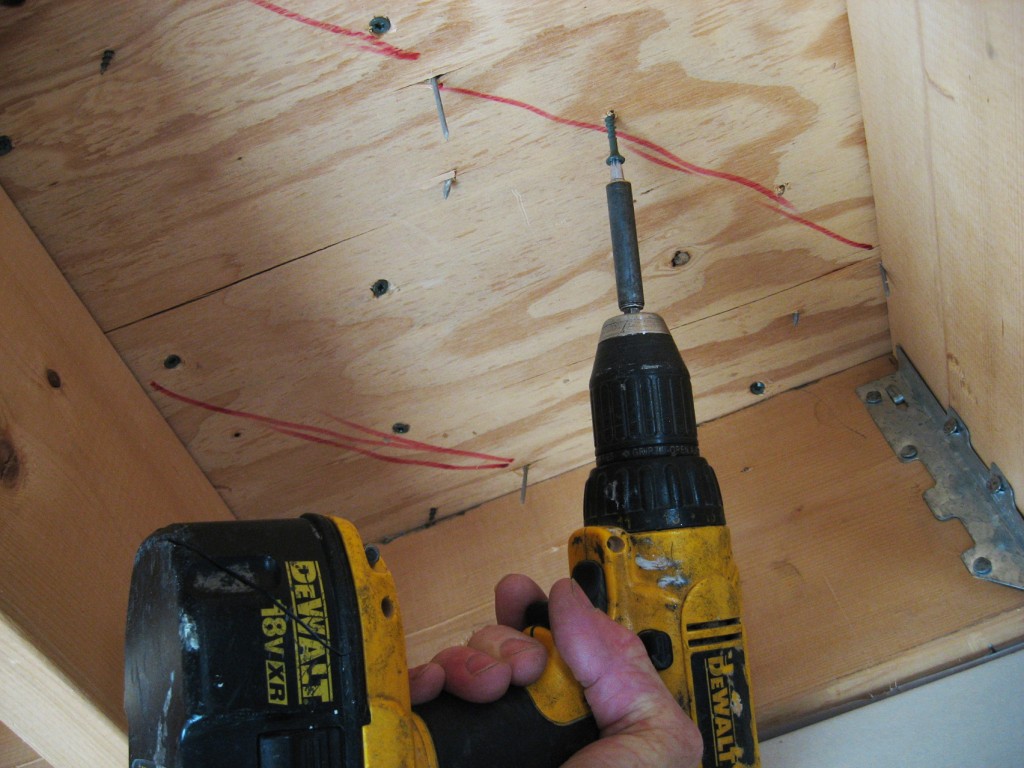Shallow wells are not that uncommon in this neck of the woods nor is it uncommon that they go dry. Towards the end of the summer of 2007 our shallow water well almost went dry. It was OK to take a quick shower and do a few dishes but no more than that. If we wanted to do the laundry we needed to time it right. Our well had always been good, even in the dry summers, but not this year. It was only my wife and I who were using the water–and part time at that– but as I was going to soon get the guest bedroom habitable, I was thinking about the future. We couldn’t have a guest staying here and run out of water.
 In the spring of 2008 I had a deep water well drilled – and it was deep, 620 feet. We are at 2300’ elevation and about 500 to 600 feet above the river valley floor below, meaning the water table was down to the valley. The driller hit water at 400 feet, but the flow was mediocre. Drillers want to get a flow of at least 10 gallons per minute (GPM). At the time they were charging me $10/ft. , so it is in a driller’s interest to drill as deep as possible. Yes, you are at their mercy. The driller told me in advance how deep he thought the well should be, based on the other wells in the area. So it was looking like it would cost over $7,000 to drill the well and he wanted another $4,000 to complete it. By completing it, we’re talking about the pump, pump wire, poly pipe, digging the trench and breaking through the concrete basement wall to connect the pipe to the pressure tank. I said, “OK. But for now just drill the well.”
In the spring of 2008 I had a deep water well drilled – and it was deep, 620 feet. We are at 2300’ elevation and about 500 to 600 feet above the river valley floor below, meaning the water table was down to the valley. The driller hit water at 400 feet, but the flow was mediocre. Drillers want to get a flow of at least 10 gallons per minute (GPM). At the time they were charging me $10/ft. , so it is in a driller’s interest to drill as deep as possible. Yes, you are at their mercy. The driller told me in advance how deep he thought the well should be, based on the other wells in the area. So it was looking like it would cost over $7,000 to drill the well and he wanted another $4,000 to complete it. By completing it, we’re talking about the pump, pump wire, poly pipe, digging the trench and breaking through the concrete basement wall to connect the pipe to the pressure tank. I said, “OK. But for now just drill the well.”
Needless to say, I decided to complete the well myself and did it for a total cost of about $2,000 and a lot of anxiety. The problem was I didn’t know how to do it and I couldn’t exactly ask the well driller. Why should he tell me? My only experience was years ago, when I had helped pull a submersible pump that needed repair from a cattle well out in Montana, but that was it. I found that neighbors are usually happy to offer their wisdom. It’s also possible to get information from the plumbing supply place when you go to buy your pump–but in my case, the supply place led me astray on the wire size. The best thing is to educate yourself by getting information from multiple sources–most especially the pump manufacturer. Just go online and search “installing submersible well pump.” Make sure to compare several sources so you don’t get led down the wrong path.

12-2 Romex, 12-2 UF and #10- 3 wire pump cable.
The pump manufacturer’s site will tell you what size pump is needed based on how deep your well is. They can also tell you what size wire to run based on the pump horsepower and well depth. There are charts for this online also. I bought a Myers, Predator 4”, 2 Horse Power, 220 Volt pump. I needed a 220 Volt pump because my well was so deep. Because the pump was 220 Volt, I needed to run 3-wire cable. Pump wire is special wire that can obviously be under water but it doesn’t have an additional heavy covering over the twisted wires, (i.e. Romex or direct burial UF wire).
The static water level, meaning the level at which the water will reach when no one is drawing water for a period of time, was at 390 ft. I figured this out by dropping a rubber ball attached to a line and measuring it, several times. I did this myself after the drilling rig was gone, because I don’t trust people until they prove they can be trusted. Someone who gets paid by the number of feet drilled makes me wary because I can’t see the results myself. So while I was at it, I also measured the total depth of the well–not easy to do; it took several attempts. I was happy to see the well was in fact what the driller said it was–620 ft. Since I was also at the driller’s mercy for knowing the gallons per minute the well produced, I also wanted to measure that. You think the driller measures this with a meter? No they don’t–they estimate it by looking at the water flowing out the top as they are drilling. To complicate this, they are at the same time pumping water and high pressure air down the drill pipe and out through holes in the drill bit in order to force up the cuttings. Anyone who has done this for a while can eyeball the GPM. Most of these drilling companies are family operations and the sons and daughters grow up watching the returns. Of course I didn’t have that advantage.
The driller said the pump should be set at 500 ft. (for sediment reasons, they don’t put the pump at the bottom of the well).
In my case, the driller didn’t think there was enough GPM when he first hit water at 400’, and he didn’t stop at 500’ where he recommended the pump be placed. He drilled to a total depth of 620’. The theory is that even though the pump is at 500’, the water in the surrounding rock formation is putting out pressure forcing the water into the hole, up to the 500’ pump and beyond, at the same time that the static water level is dropping in the hole when you are drawing water. I have proof that this happens which I will explain later. The pump uses the water to cool itself so you never want this type of pump to run out of water, as it will burn out very quickly. That is why drillers want at least 10 gallons per minute and your pump shouldn’t be rated for more than that output level.
There is another very good reason for putting the pump at 500 ft.: after 500’ you can’t use poly pipe. Rigid pipe is recommended or required, and it’s much much more expensive. The other thing is that you are not supposed to use #10 wire past 400’ for my 2HP size pump but you can get away with it to 500’. Getting away with it was not something I wanted to do so I ran 400’ of #10 wire and then spliced on another 100’ of #8 wire at the top. I don’t know how good of an idea that was but it couldn’t hurt, I decided. I had already bought the #10 wire and then found out by looking closer at the chart that they recommended using #8. The plumbing supply sales guy said he talked to the pump manufacturer and they said #10 wire should be fine. They would not exchange the #10 for #8 since it had been cut off a large spool. They didn’t even have #8 pump wire. It was not easy to find.
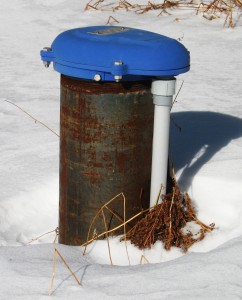
Steel casing, well cap and electric conduit.
My well has 60’ of casing on top, which I had to pay $15/ft. extra for. The driller will determine how much casing is needed, based on the formation and when he hits bedrock. Each steel casing is 20’ long and 6” in diameter. The driller attaches a special drive shoe on the first length that goes into the hole, ($100) and then screws on each subsequent pipe. As the casing is lowered into the hole, it is rotary hammered down with the protective drive shoe leading the way until bottom is hit or the last piece of casing is less than two feet above ground. The pipe is called surface casing, which keeps out contaminated surface water. This is necessary because even though the well is in a supposedly pristine area, there are animals that defecate and contaminate the surface water. You definitely don’t want that surface water–or anything else–to be going down the hole. Once the surface casing is set, the driller puts on a smaller bit to fit inside the surface casing and drills the rest of the well.
When they drill gas and oil wells they actually pump concrete under high pressure down the casing and wait till they see the cement come out around the outside of the casing at the surface. That way any cavities around the outside of the casing are completely sealed with concrete. Oil and gas well surface casing is over 400’ deep. When they continue drilling and hit the pay zone, 4” steel casing is run almost to the bottom and again concrete is pumped down the casing, followed by a rubber plug and the exact amount of water, until they get cement returns out on the ground above. This seals off the oil and or gas from the ground water for the entire depth of the well. In unusual drinking water well situations, they may cement or grout the surface casing but not the rest.
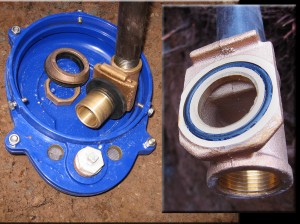
Pitless adaptor assembled, before insertion down the casing.
The most interesting device of the whole water well drilling process is what you install after you get your pump and wire size all figured out–it’s the Pitless Adapter. This is what allows your well to remain sanitary and prevents the water from freezing in winter before it gets to your house.

Drilled casing for pitless adaptor.
You need to excavate below the frost line–in the Northeast that’s four feet. Drill out the casing to the size hole that fits your adapter. Slow down when you are breaking through to make sure your pilot bit holds onto the steel cutout and it doesn’t drop down the hole. Buy some black pipe and make your own T bar for lowering the adapter down the inside of the casing. Slip the nipple through the hole and make your connection. The Pitless Adapter makes a very nice seal around the casing and I did not use any sealant. You don’t reef on the fitting to tighten it or you will ruin the rubber gasket. Just make it nice and friendly tight.

Hook up run to the house, water & electric conduit.
Even though you don’t have to run conduit for your electric wire, past experience has taught me that direct burial wire has its own problems, so I prefer to use conduit. This way, if ever there is a problem, I don’t have to dig up the wire and if I do, it is protected. Same with the poly pipe. I ran it inside a piece of 2″ schedule 40 PVC pipe and used a 4″ piece of drain pipe to slip over the end.

Heat shrink connectors, #10 wire.
After I had my Pitless Adapter installed and the trench back-filled, it was time to get my pump ready. I needed to connect the wire to the pump by using heat shrink water proof crimp connections. I very carefully used a propane torch. A heat gun would be best or even a lighter. If you have never done it before, make a test splice first. I started in the middle and worked my way out till the sealant oozed out the end. This is #10 three wire with ground because it is a 220 Volt pump.

Testing the pump. "Just make sure it works."
The pump manufacturer will recommend you test the pump first. They have some complicated instruction about using an ohm meter and lifting it in and out of the water checking the resistance. I called them and was told to just make sure it works.

The torque arrestor.
When the pump starts, the motor spins and creates torque. The Torque Arrestor is designed to prevent the pump from spinning and slapping against the well wall or spinning off completely. The TA must be expanded– but not so much that it doesn’t fit down the well. The strain relief cable is attached to the pump eye bolt and everything gets taped around the pipe. Forget these orange ties you see in these photos, they were cheap and broke off (box store). Buy goods ones if you want to go this way.

The backflow check valve.
The backflow check valve should be installed every 200′. Notice these hose clamps are alternated. I believe these opposing forces create a tighter connection. Get your hose clamps from a plumbing supply house and not a box store. The cheap clamps will pop just when you like the tightness. I had to use a propane torch and heat the ends of the poly pipe for all my connections to slip onto the brass fittings. Maybe that was because of the 200lbs test pipe I was using for the depth.

The Contraption!
This is my pride and joy. I called it “The Contraption”. We are talking 500 feet of pipe and wire here. That is a lot of weight so I wanted a gradual bend from a stable feed point. I secured The Contraption by screwing it to steel stakes, driven into the ground at angles. You don’t want to let the pipe and wire scrape against the side of the casing, so The Contraption is what I came up with. I have the end of the poly pipe and strain relief tied off on my Jeep way back behind the house. My wife, Deb, was at the wheel and I was talking to her on a 2 way radio as she creeped ahead, feeding me the pipe, wire and rope, all laid out smoothly on the snow. We stopped every 20′ and I added a circular plastic bushing to keep the pipe and wire off the well wall.
I am glad it snowed before we did this because it kept everything cleaner.
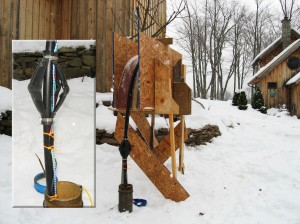 I put a piece of old carpet over The Contraption slide to soften the contact and give it some slight friction. When the pump hit the static water level there was a noticeable difference, it went down slower and got lighter.
I put a piece of old carpet over The Contraption slide to soften the contact and give it some slight friction. When the pump hit the static water level there was a noticeable difference, it went down slower and got lighter.
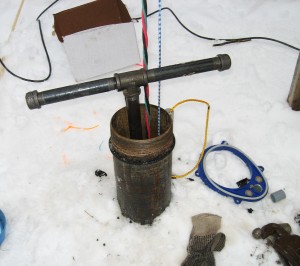
My homemade pitless adapter connection tool.
My anxiety had gone as the pump was being successfully lowered down the well, I was even jubilant. Deb’s aggressive driving didn’t even bother me as we missed a few spacer bushings. But now I was at the end of the pipe and the apprehension rose as I contemplated making the Pitless Adapter connection. The thought of the whole works dropping down to the bottom of the 620′ well terrified me.
In the end I was happily surprised that I could, unassisted, pick up the T-bar end and slide the Pitless Adapter in place. There was still tension on the strain relief as I did this. When I bought the 500′ spool of poly pipe I could barely get it into my jeep it was so heavy, not to mention the #8, 3 wire and pump. Never having done this before it was quite exciting. I was very relived in the end to say the least!

Making the pitless adapter connection.
After you slide the Pitless Adapter into place you simply unscrew your T bar and marvel at the results.
I bolted a rope tie clamp to the inside top of the casing and secured the strain relief there, keeping it as tight as I could. The plastic rope was sold to me by the plumbing supply place and they said it was strong and used for this purpose by everyone.
Since this was a new well I needed to flush it out. So before hooking up to the pressure switch I made a temporary connection to the breaker panel and turned on the pump. It was an intense moment as I waited to find out if the pump would actually work and after a few seconds dirty water came gushing out the pipe. Yeah! I let the water run for a few minutes as it cleared and shut it off waiting for an hour then letting it run again. I actually did this a few times each day over a number of days till I was satisfied.
I learned that if you let the water run too long at full force for say 12-15 minutes, the smell of rotten eggs becomes noticeable. This is sulfur in the water and you can taste it. The driller told me that he started to smell sulfur at the end of his drilling but he wasn’t sure if the smell was coming from the water in his tank that he was injecting into the well to remove the cuttings, or from my well. I stopped running the water full blast for longer than 10 minutes and the smell stopped. So I figure what was happening was this: as the static water level is lowered by pumping, sulfur laden water from the bottom of the well is being pushed up to the level of the pump. If you don’t tax the well inordinately, the sulfur water never reaches the pump. As the static water level recovers between uses, the pressure from higher up, non-smelling, good-tasting water, keeps the sulfur water down where it belongs. After using this well for over 9 months I only smelled sulfur once and that was because a garden hose was forgotten and left on.
So for all you skeptics out there–including me–this supports the driller’s reason for going so deep. If the well wasn’t so deep my pump running full blast for 15 minutes would run dry and burn up!

The tank T and pressure switch.
All the parts in this picture are necessary except the white union on the left. I just like the flexibility to make changes quickly. I have learned that I don’t always think of everything and plans change.
The bigger your pressure tank, the longer your drawn down water volume before the pump kicks on. Your pump will last longer if it doesn’t cycle on and off to much. This is a WellMate 87 gallon fiberglass tank. It has a 29.5 gallon draw down at 20/40PSI.
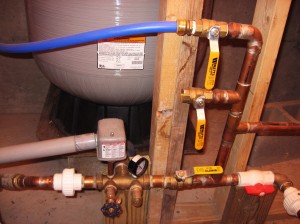
The tank T and distribution arrangement.
Everyone’s needs are different but pictured here is my distribution arrangement. The best thing to do is go to your Plumbing Supply place and lay everything out on the counter, making sure your adapters and everything fits together. As I was doing this, I had a few friendly, professional plumbers walk by and throw in their 2 cents. I highly recommend brass ball valves and only used the 1 inch white PVC valve on the right because I had one lying around and wanted to try it. Like I said before, because of the unions I can take this all apart and make changes easily. When this was all done I only had one small drip and it stopped within a few months. Small leaks will sometimes do that. I just put a small plastic container underneath the fitting and let the water drip. The leak was so small the container never filled more than an inch and the water would evaporate. Now the floor is always dry.
Just a final word on price. In building my own house I usually have had to fight to get contractor prices on things. I use the box stores as a benchmark for price and go from there. The box stores in our area used to almost always be the cheapest but in the last few years I have noticed that to be changing in all facets of building supplies. Vendors in the past who could care less about your piddly little project are now interested in getting your business and will quote a competitive price. In the past I have dealt with places that would give me a good price on a whole project but when I went back six months later for something they forget who I was and put the screws to me. So always stand up for yourself and don’t take past pricing for granted.

